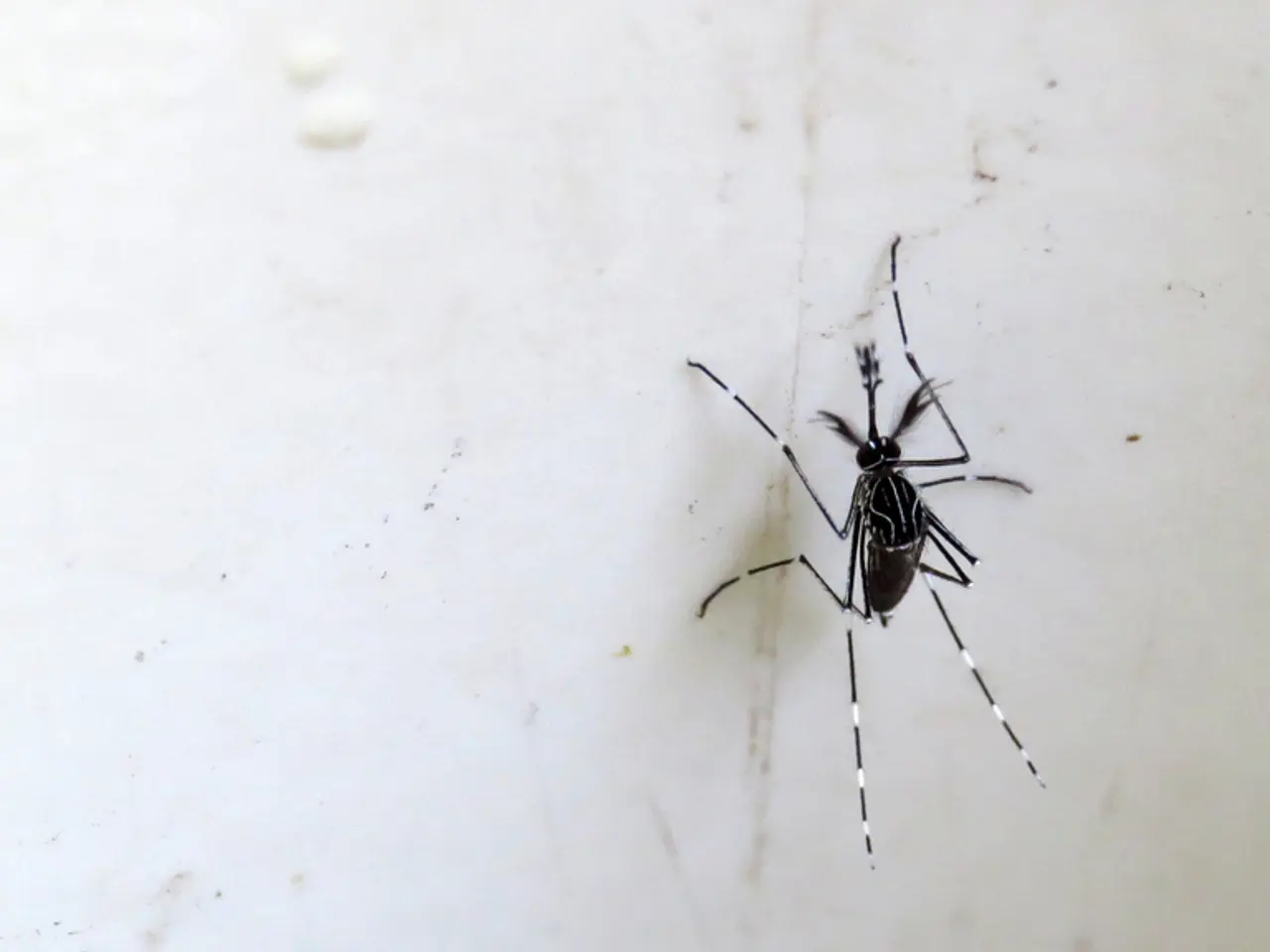Discovered: A Harmful Mosquito Species Emerges in Pleasanton, Spelling Trouble
In a recent development, Aedes aegypti mosquitoes have been detected in Pleasanton, California for the first time since 2014. This species, known for its ability to spread serious diseases like dengue, Zika, and yellow fever, is currently not established in Alameda County, but has been detected in four Bay Area counties and is present in 19 California counties.
In response to this discovery, the Alameda County Mosquito Abatement District has launched a rapid response effort to prevent the mosquito from establishing a permanent presence. The focus of these efforts is primarily on property and public area inspections. Local mosquito districts have been conducting inspections in affected neighborhoods to identify and eliminate breeding sites.
The public is urged to cooperate with staff by allowing access to their properties for inspections. Staff will be conducting these activities on Thursday, October 10. Residents are also encouraged to take personal precautions such as dumping and draining standing water around homes, including in pet dishes, flower pots, and kiddie pools, to reduce mosquito breeding sites.
Additionally, using insect repellents, especially during peak mosquito activity times at dawn and dusk, is recommended to prevent mosquito bites. These efforts combine direct mosquito surveillance (inspection and control) with public education on reducing breeding habitats and personal protection, which are standard strategies for managing invasive mosquito species like Aedes aegypti.
At this time, there is no information suggesting the implementation of more aggressive measures such as widespread pesticide spraying or genetic control in Pleasanton. The focus appears to be on targeted inspections and community engagement.
For more information or to report mosquito sightings, visit www.mosquitoes.org or call (510) 783-7744.
[1] Source: Alameda County Mosquito Abatement District [2] Source: Centers for Disease Control and Prevention (CDC)
- Science has confirmed the presence of Aedes aegypti mosquitoes in Pleasanton, California, a development that emphasizes the significance of medical-conditions related to these insects.
- Known for spreading chronic diseases like dengue, Zika, and yellow fever, this species is not yet established in Alameda County but has been detected in four Bay Area counties and 19 California counties.
- In response to this discovery, the Alameda County Mosquito Abatement District has initiated a rapid response effort to prevent the mosquito from establishing a permanent presence.
- The focus of these efforts is primarily on property and public area inspections to identify and eliminate breeding sites.
- Local mosquito districts have been conducting inspections in affected neighborhoods to ensure the health-and-wellness of residents.
- Residents are encouraged to cooperate with staff by allowing access to their properties for inspections on Thursday, October 10.
- Personal precautions such as dumping and draining standing water around homes, including in pet dishes, flower pots, and kiddie pools, should be taken to reduce mosquito breeding sites.
- Using insect repellents, especially during peak mosquito activity times at dawn and dusk, is recommended to prevent mosquito bites.
- These efforts combine direct mosquito surveillance with public education on reducing breeding habitats and personal protection, which are standard strategies for managing invasive mosquito species like Aedes aegypti.
- At this time, there is no information suggesting the implementation of more aggressive measures like widespread pesticide spraying or genetic control in Pleasanton.
- Instead, the focus appears to be on targeted inspections and community engagement.
- For more information or to report mosquito sightings, visit www.mosquitoes.org or call (510) 783-7744.
- Sources for this information include the Alameda County Mosquito Abatement District and the Centers for Disease Control and Prevention (CDC).
- Recognizing the severity of diseases like cancer and chronic diseases caused by these mosquitoes, awareness about personal protection is vital in lifestyle choices.
- In addressing environmental-science concerns, reducing breeding habitats and using safety repellents can contribute to a sustainable future.
- In the manufacturing industry, precautions against pesticides and safety protocols for handling potential disease carriers should be implemented to protect workers' health.
- The mental-health impact of chronic diseases can be just as significant as the physical symptoms, requiring attention from mental health professionals.
- Skin-care products containing natural ingredients, promoted by the skin-care industry, can offer a safer alternative to protect against insect bites and skin-conditions.
- Nutrition plays a crucial role in maintaining cardiovascular-health and enhancing the body's ability to fight against diseases.
- The fitness-and-exercise industry encourages regular workouts and a balanced routine to boost the immune system and foster overall health.
- Autoimmune-disorders require constant management, making nutrition and fitness essential components in maintaining well-being.
- Climate-change, another critical issue, can impact the distribution of disease-carrying mosquitoes and pose a potential risk to public health.
- The retail industry should consider the environmental impact of products sold, and promote alternatives that are safe for both consumers and the environment.
- Interior-design, cooking, and transportation industries also have a responsibility to ensure safety and sustainability as part of a comprehensive health-and-wellness approach.
- Wearables and smart-home-devices can be a valuable asset in monitoring and addressing health concerns, providing data-and-cloud-computing capabilities to track wellness indicators and personalize preventative measures.
- Cybersecurity is essential in protecting personal health information accessible through these technologies, safeguarding privacy and preventing breaches.
- Financial management, including investing, wealth-management, and personal-finance, can contribute to a comprehensive wellness strategy by reducing stress and securing a worry-free retirement, allowing focus on maintaining long-term health and wellness.




